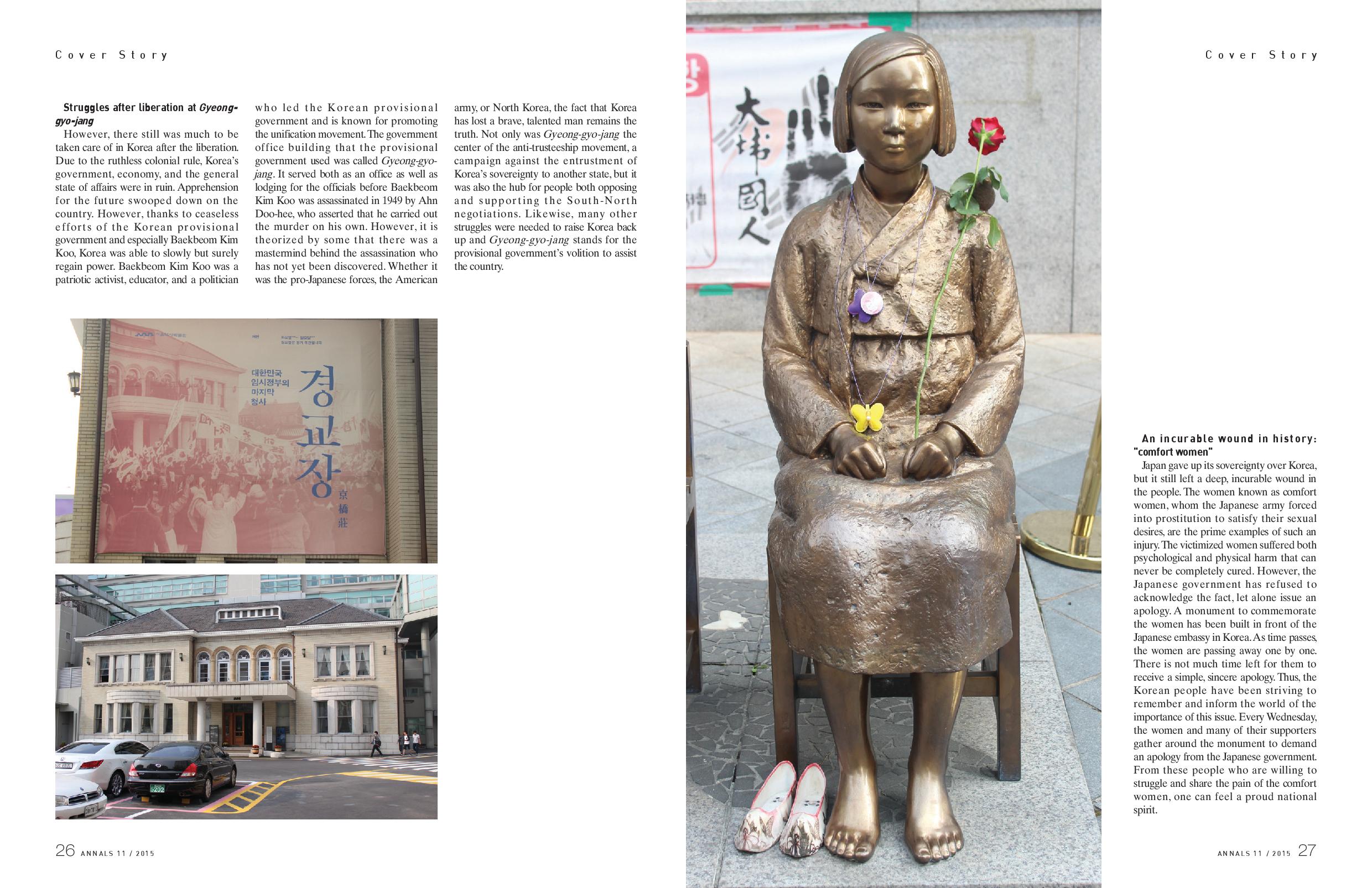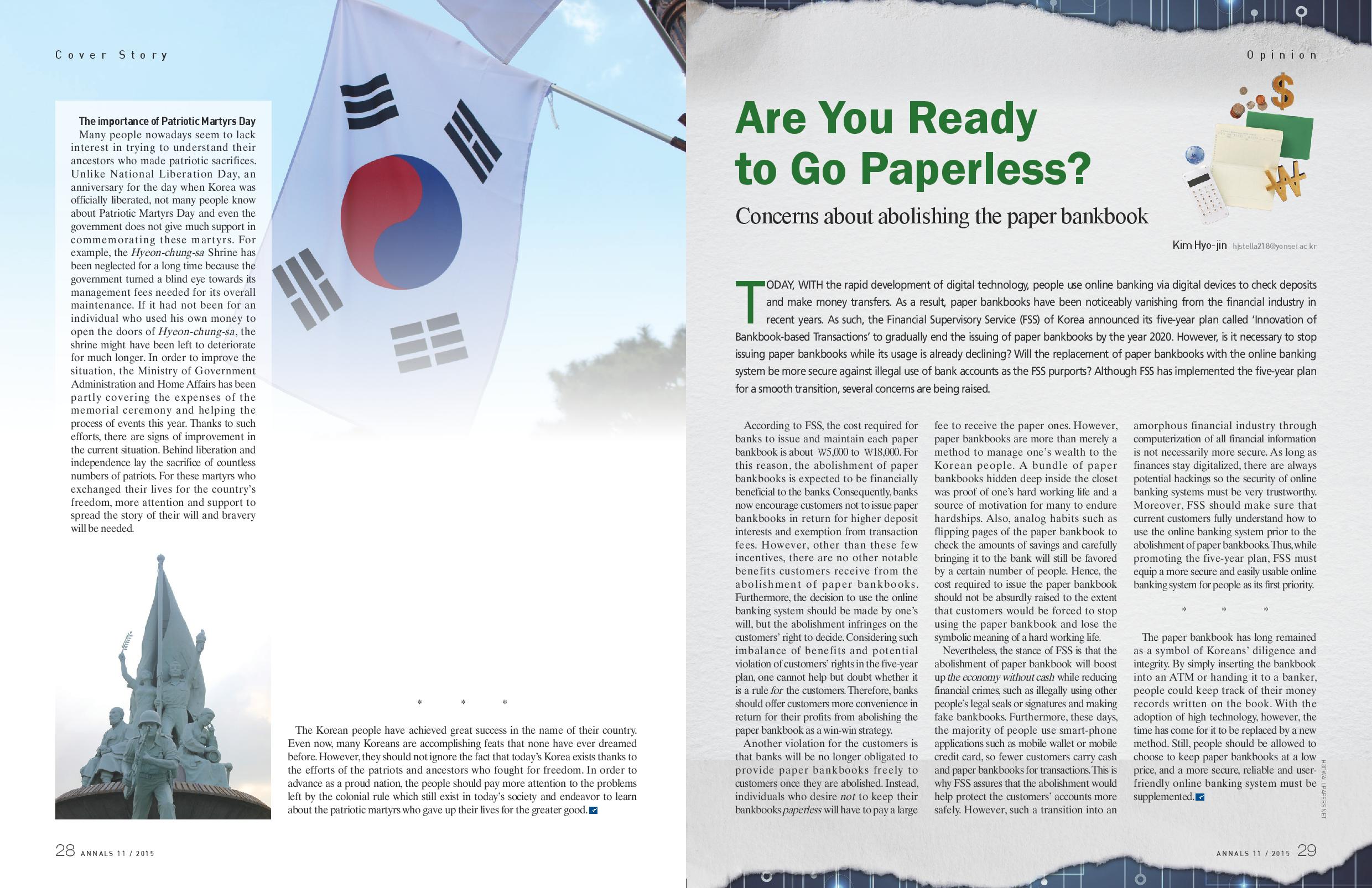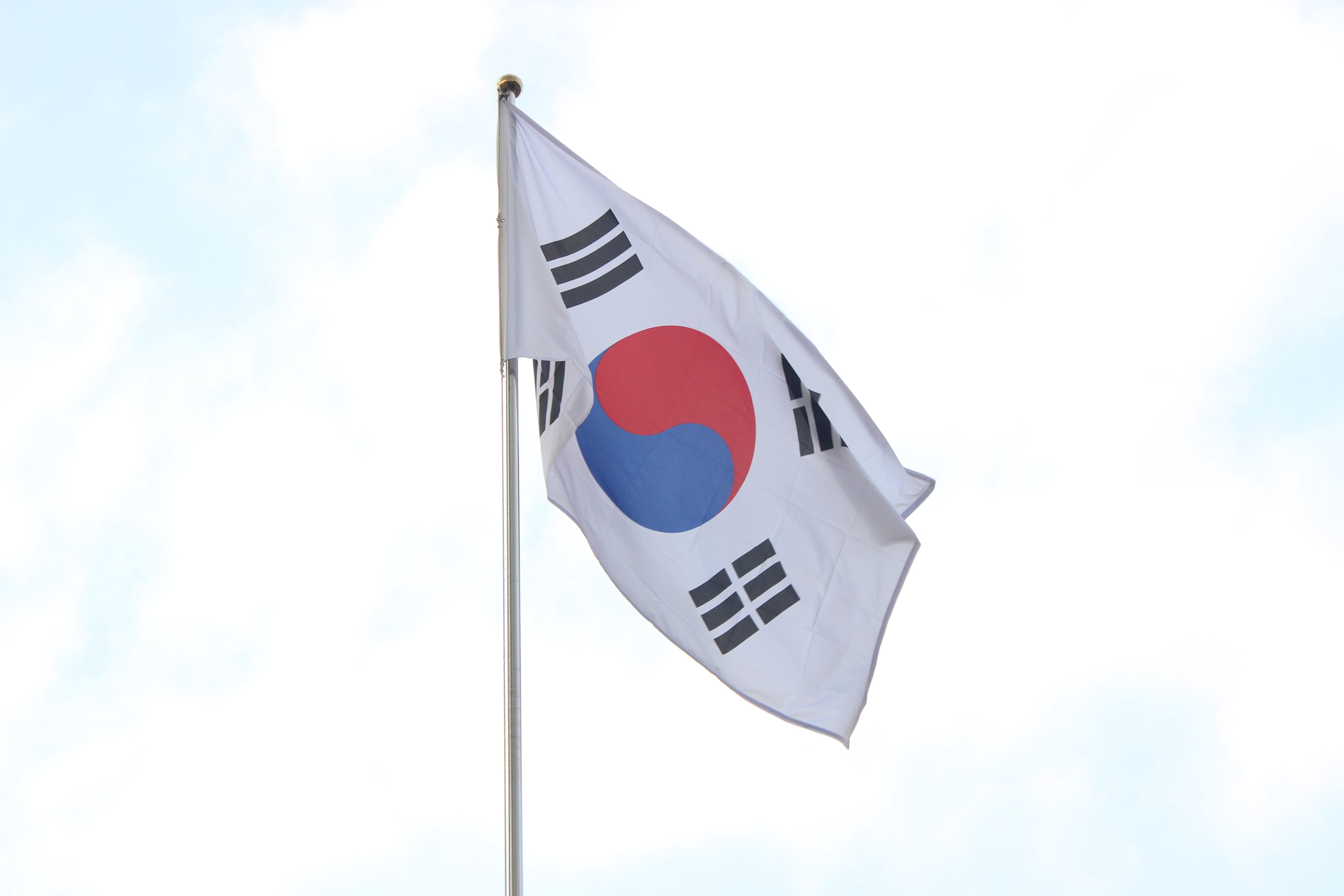Searching for traces of patriotic martyrs in Korea
 | ||
 | ||
 | ||
 | ||
 | ||
NOVEMBER 17 is Patriotic Martyrs Day in Korea. Its date originates from the day Korea lost its sovereignty to Japan, and it commemorates the martyrs who fought valiantly for the country’s independence and died before seeing Japan’s surrender in 1945 at the end of World War II. Sadly, not many people nowadays know what the anniversary really celebrates. However, forKoreans, having knowledge of their ancestors, towhom they owe the current peace, is important. With Patriotic Martyrs Day not so far away, it seems opportune to ponder the emotion of ae-guk, love for one’s country, and learn about the history of the martyrs during the Japanese colonial rule.
Seodaemun Hyeong-mu-so at the heart of the independence movement
Traces of patriotic martyrs exist in Seodaemun Hyeong-mu-so, which is now called Seodaemun Prison History Hall. It is a formerprison remodeled as a museum, displayingthe atrocities during the era under the colonial administration of Japan. The Seodaemun Prison was first built and named Gyeongseong Prison in 1907 by the Japanese, who intended to imprison Korean patriots that resisted colonial rule. More than3,000 Koreans were imprisoned here at the same time for various charges, such as standing against Japanese rule or fighting for democratization. It is also the place where Yu Gwan-sun and Kang Woo-kyu, twowell-known martyrs, passed away after being imprisoned and tortured. Yu Gwan-sun was the organizer of the March 1st Movement, a peaceful protest in which the Korean people in 1919 demanded independence. Kang Woo-kyu is an activist who in yeartried to assassinate the then governor of Korea, Saito Makoto, with a bomb at Seoul Station but failed. After the achievement of independence, the South Korean government took over the prison and confined many pro-Japanese and anti-nationalists. In addition, the government also detained numerous pro-democracy activists in the same prison. A historic site that was at the heart of the independence movement and thepro-democracy movement, theSeodaemun Prison History Hall maintains and displays the intense patriotic spirit felt at the time. Not so far away, one can also find the Patriotic Martyrs Monument, built in order to honor the ancestors who gave up their lives in an effort to liberate the country and its people.
In commemoration of the martyrs
In order to pay tribute to patriots, martyrs, as well as soldiers who died in service to their country, the government built Seoul National Cemetery, called Hyeon-chung-won. Endless stretches of graves and tombstones bedeck the hills. Up on the hill, one can see Chung-yeol-dae, a monument built in their memory. The memorial symbolizes the loyalty of all the martyrs buried in the Seoul National Cemetery for their sacrifices to the country.
Celebration of official independence at Seoul Station
Korea was officially liberated from Japan onAugust 15, 1945. The next day, on August 16, millions of people swarmed into the streets and the plaza in front of the old Seoul train station. They waved the Korean flag, Tae-geuk-gi, and shouted out Dae han dok rip man se, meaning “Bravo to Korea’s liberation” to celebrate independence. Having been oppressed by the Japanese government for a long time, Koreans savored the taste of freedom and victory for the first time in fourdecades. The old Seoul Station, now changed into Culture Station Seoul 284, maintains the same exterior as the one 70 years ago and has blended into everyday life in the city. At the moment, an exhibition of Korea’s history since the Japanese colonial era is being held inside. One can find photos of the old streets of Seoul reconstructed and timeworn items and posters displayed behind the cases. People walk by the historically significant site where traces of their ancestors’ excitement still linger in the buildings. Every year, on the same day when Korea was liberated, millions of people gather to replay the touching scene of Korean independence.
Struggles after liberation at Gyeong-gyo-jang
However, there still was much to be taken care of in Korea after the liberation. Due to the ruthless colonial rule, Korea’s government, economy, and the general state of affairs were in ruin. Apprehension for the future swooped down on the country. However, thanks to ceaseless efforts of the Korean provisional government and especially Baekbeom Kim Koo, Korea was able to slowly but surely regain power. Baekbeom Kim Koowas apatriotic activist, educator, and a politician who led the Korean provisional government and is known for promoting the unification movement. The government office building that the provisional government used was called Gyeong-gyo-jang. It served both as an office as well as lodging for the officials before Baekbeom Kim Koo was assassinated in 1949 by Ahn Doo-hee, who asserted that he carried out the murder on his own. However, it is theorized by some that there was a mastermind behind the assassinationwhohas not yet been discovered. Whether it was the pro-Japanese forces, the American army, or North Korea, the fact that Korea has lost a brave, talented man remains the truth. Not only was Gyeong-gyo-jang the center of the anti-trusteeship movement, a campaign against the entrustment of Korea’s sovereignty to another state, but it was also the hub forpeople both opposing and supporting the South-North negotiations. Likewise, many other struggles were needed to raise Korea back up and Gyeong-gyo-jang stands for the provisional government’s volition to assist the country.
An incurable wound in history: ‘comfort women’
Japan gave up its sovereignty over Korea, but it still left a deep, incurable wound in the people. The women known as comfort women, whom the Japanese army forced into prostitution to satisfy their sexual desires, are the prime examples of such aninjury. The victimized women sufferedboth psychological and physical harm that can never be completely cured. However, the Japanese government has refused to acknowledge the fact,let alone issue an apology.A monument to commemorate the women has been built in front of the Japanese embassy in Korea. As time passes, the women are passing away one by one. There is not much time leftfor them to receive a simple, sincere apology.Thus, the Korean people have been strivingto remember and inform the world of the importance of this issue. Every Wednesday, the womenand many of their supporters gather around the monument to demand an apology from the Japanese government. From these people who are willing to struggle and share the pain of thecomfort women, one can feel a proud national spirit.
The importance of Patriotic Martyrs Day
Many people nowadays seem to lack interest in trying to understand their ancestors who made patriotic sacrifices. Unlike National Liberation Day, an anniversary for the day when Korea was officially liberated, not many people know about Patriotic Martyrs Day and even the government does not give much support in commemorating these martyrs. For example, the Hyeon-chung-sa Shrine has been neglected for a long time because the government turned a blind eye towards its management fees needed for its overall maintenance. If it had not been for anindividual who used his own money to open the doors of Hyeong-chung-sa, the shrine might have been left to deteriorate for much longer. In order to improve thesituation, the Ministry of Government Administration and Home Affairs has beenpartly covering the expenses of the memorial ceremony and helping the process of events this year. Thanks to such efforts, there are signs of improvement in the current situation. Behind liberation and independence lay the sacrifice of countless numbers of patriots. For these martyrs who exchanged their lives for the country’s freedom, more attention and support to spread the story of their will and bravery will be needed.
* * *
TheKorean people have achieved great success in the name of their country. Even now, many Koreans are accomplishing feats that none have ever dreamed before. However, they should not ignore the fact that today’s Korea exists thanks to the efforts of the patriots and ancestors who fought for freedom. In order to advance as a proud nation, the people should pay more attention to the problems left by the colonial rule which still exist in today’s society and endeavor to learn about the patriotic martyrs who gaveup their lives for the greater good.
Kim Yu-jin
yujinanne@yonsei.ac.kr

